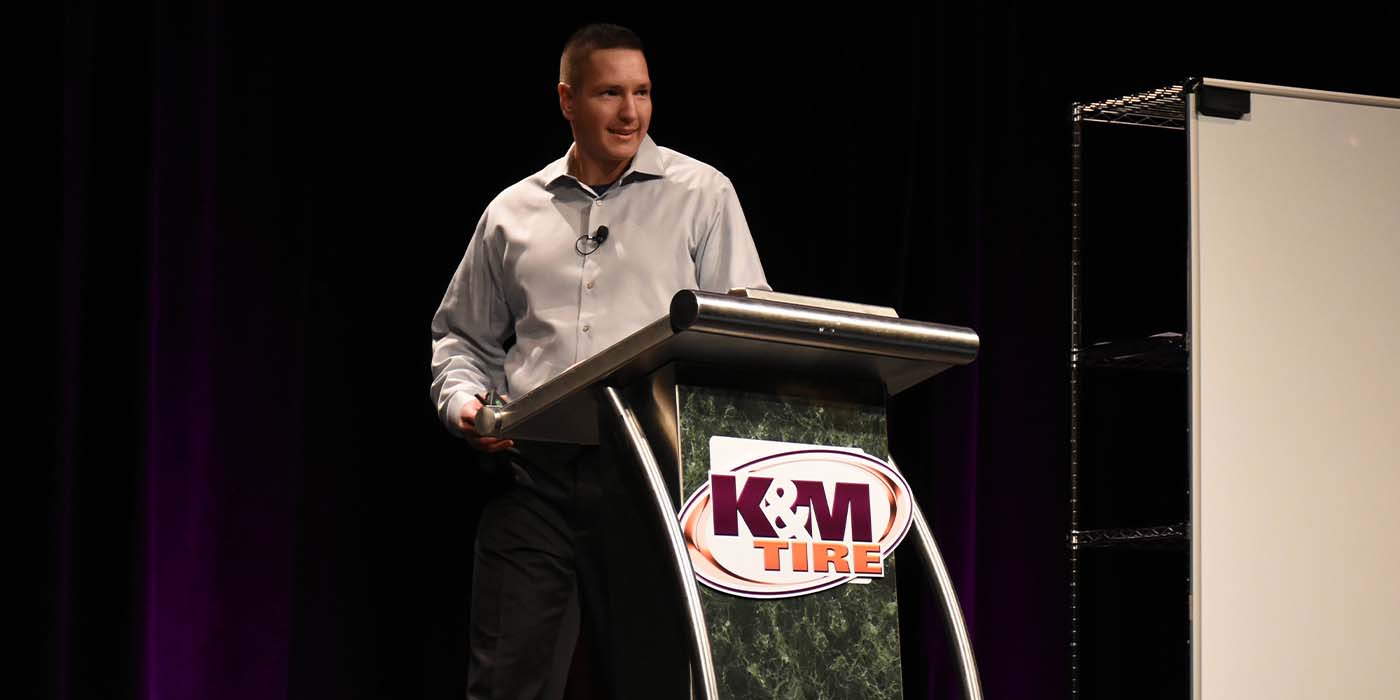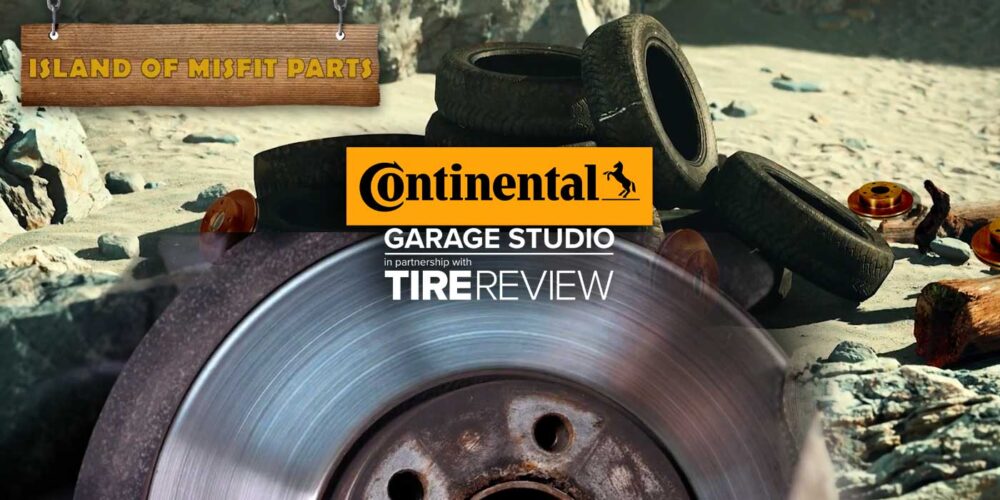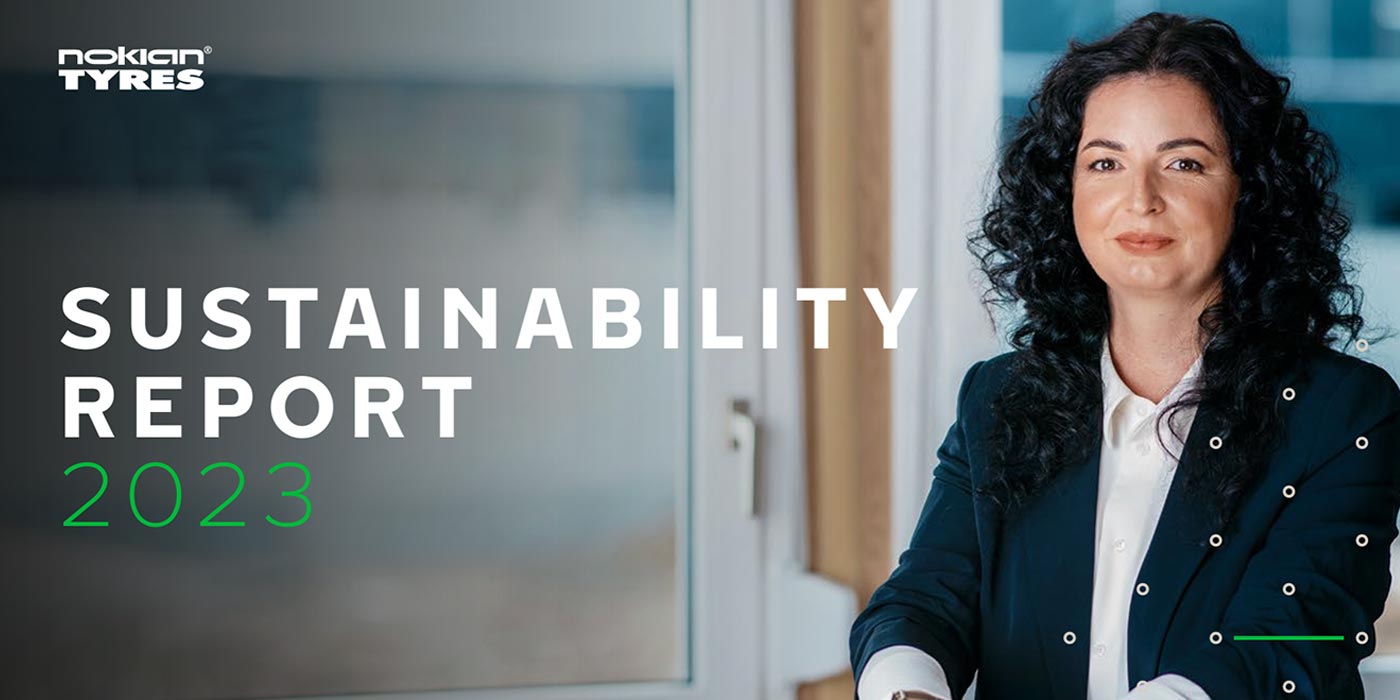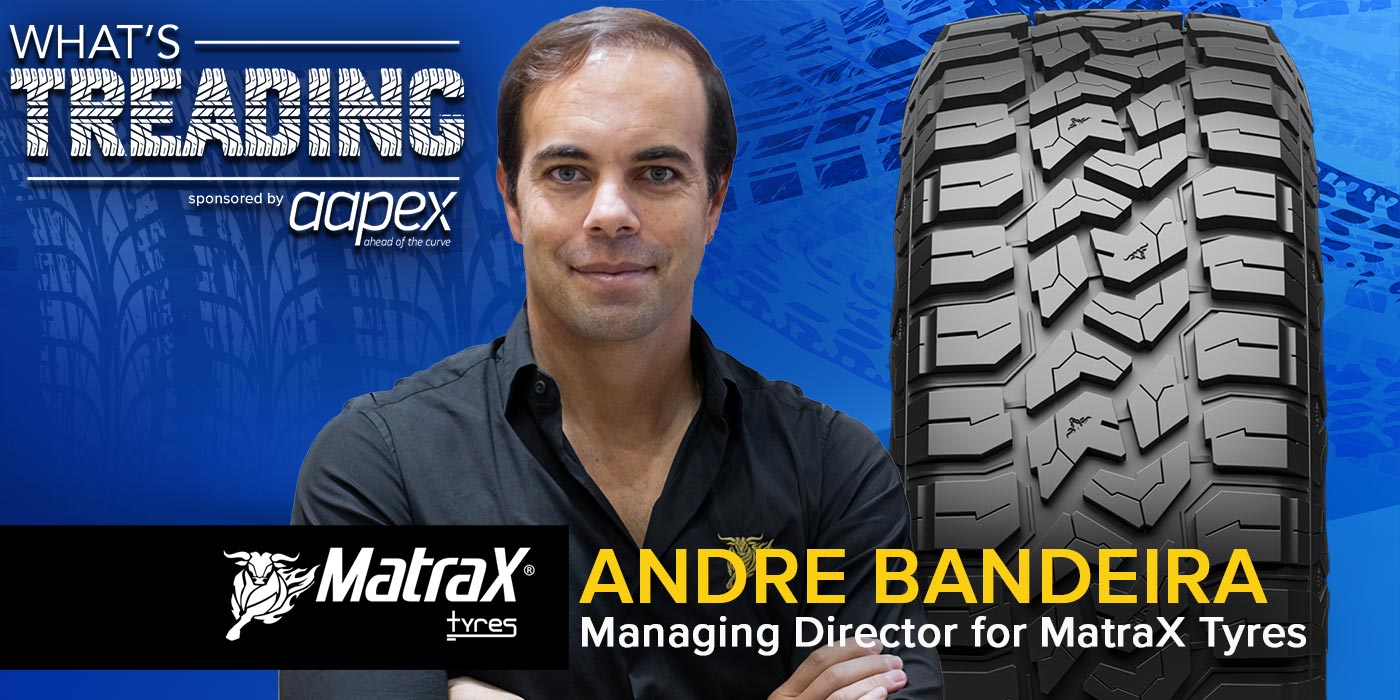The new-tyre manufacturers were displaying healthy profits, distribution chains were mushrooming across South Africa, their founders basking in what arguably was an acceptable measure of wealth and prosperity.
Equally, the retreading industry was experiencing its own surge with retreaded tyres in the commercial sector accounting for as much as 60% of their customers’ tyre spend. Even passenger retreads filled an important niche in the marketplace. My, how times have changed!
Almost 20 years later the scene is somewhat different. Globalisation – now practically a household word – has come at a price, particularly for an emerging market like ours. When measured against recent history, the market has opened up, import controls have been lifted and South Africa is now part of the global village. Were it not for the country also becoming a convenient ‘dumping ground’ for a growing influx of cheap imports from more economically established nations, we might be convinced that globalization and its spin-offs has been nothing short of positive for our corner of the world.
Imports Wreak Havoc
As things stand, the growing number of imports filtering over our borders has caused major disruption, (although a slow-down on imports has been experienced since the introduction of import duties on Chinese makes during the fourth quarter of 2006). The local tyre makers are now faced with a double-edged sword. In one breath they are being expected to improve on their technologies and innovations and produce tyres of immeasurable quality in an effort to stave off competition from their Far Eastern counterparts. In another, the implementation of new technologies and systems requires substantial capital investment that cannot possibly be recovered if their tyres are expected to compete with the foreign ‘cheapies’ on price.
Next, the price-driven nature of the market has placed the manufacturers under even greater pressure as they are expected to sell their product to their distribution networks at increasing discounts and rebates to secure the sale against a cheaper import. And so, the vicious circle continues.
“In the medium term, local manufacturing targets and grey imports are causing a massive over supply of tyres – and margins are getting squeezed throughout the supply chain,” confirmed Gavin Kockott, CEO of Bridgestone Retail.
“Manufacturers need to provide the support to their distribution businesses that will facilitate a smooth selling process in terms of securing the sale,” concurred Romano Daniels, PR general manager for Bridgestone South Africa. “The market is competitive and dogged and therefore, traditional selling practices have long been taboo.
“What we need to recognise, now more than ever, is the need for manufacturers to share market and consumer intelligence with our distribution partners, so that sales personnel will once again be able to sell the product with confidence towards margin. In short, in these times manufacturers’ support can hardly be limited to the distribution and supply of product,” added Daniels.
“We need to create a package of value that ensures the manufacturers enjoy economies of scale and channels of distribution, as well as provide product utility which ensures profit growth opportunities for all parties,” echoed Eddie Jordaan, marketing and sales GM at Continental Tyre.
“Location of stores is key to the future growth of the dealers’ businesses,” added Mike King, Goodyear’s sales and marketing director. “Secondly, the way forward will require a shift in operating style. In the past it was always sufficient for dealers to buy well, but this is no longer enough. The focus has shifted somewhat to the point of sale. From here on, success will depend on a successful combination of better buying (not only on price), but also better selling, if margins are to grow.”
When asked to describe the kind of support they were lending to their dealer chain, Pierre Dreyer, managing director of Dunlop, shed a ray of hope when describing the growth of the DAD (Dunlop Accredited Dealer) loyalty programme: “We have been intently focused on supporting and growing our reseller channels over the years, with particular emphasis on the Dunlop Accredited Dealer programme,” he said. “This programme has been so successful that Dunlop today, is a leading brand. More importantly, our dealers have grown their respective businesses via their entrepreneurial skills and by successfully using the various elements of the Dunlop Accredited Dealer package. We will continue to find new ways to enhance our dealer business and create new profit opportunities for them.”
The manufacturers’ commitment to their distribution channels – whether wholly owned or by way of a loyalty programme – appears intact. That said, many a dealer has expressed some concern over the apparent obsession on the part of their manufacturing partners to open more and more shops in an already saturated market.
So how did the manufacturers respond to this accusation?
Goodyear’s King replied: “Distribution is key to sustained marketshare, which is directly linked to the viability of production facilities. Too many is as bad as too few. It is the proverbial balance that is required here.”
“Whilst a balance is necessary, the emphasis should be on the quality rather than the quantity of retail outlets manufacturers own or affiliate with,” suggested Andrew Bowren, managing director of the Hi-Q retail franchise chain.
“When it comes to new stores, we believe viability needs to be assessed by area and based on the performance of that respective dealership. If a dealership is doing well in a particular area, why open another? Why not look at increasing the current dealership’s capabilities,” suggested Rob Beaumont of Auto & Truck Tyres, Wadeville. “Our market is very saturated and many small dealerships cannot survive, only to close shortly after they open,” he continued.
“At face value, the claim that manufacturers may be too focused on widening their footprint by way of new stores, may be true,” added Bridgestone’s Daniels. “However, market forces and economics will always seek a balance in terms of supply and demand. Market saturations are probably over-rated with respect to the demands placed on businesses to be creative and innovative when it comes to differentiating themselves. Distribution footprint is critical in terms of providing a product, exactly when and where the consumer requires it.
“For this reason, there is a huge responsibility on manufacturers to protect their footprint. This is surely the same for all manufacturers and that is why economics are the true leveller,” said Daniels. “When businesses start to change the way they approach the selling process, then market saturation is only a flash in the pan.”
“In a fast growing South African tyre market, where the demographics are constantly changing, it is essential to regularly review the spread and penetration of our dealers,” concurred Dunlop’s (Apollo) Dreyer. “Where new viable reseller sites and niche target markets are identified geographically, this creates opportunities for dealers.”
Similarly, Continental’s Jordaan said: “Continental’s strategy is that its product will be on sale wherever the product is required and a profit opportunity exists. That said, we respect the trading boundaries set out in our internal trading policy.”
All well and good, some are saying but what if the trading boundaries lean heavily in favour of the manufacturer?
One has to accept that a manufacturer’s first and primary objective is to maximize productivity and sell product. This is particularly essential for a market that is being infiltrated by a proliferation of cheap imports. Manufacturers must ensure plant efficiencies and economies of scale if they are to survive and the only way to do that is to meet their sales targets.
This dilemma they find themselves in could also be contributing to what the dealer trade is alluding to as another area of growing concern – the manufacturers selling their product to opposition networks at equally favourable prices. More importantly, it could also be the reason why the manufacturers are pursuing or at the very least, cooperating with the latest trend which finds end users buying their tyres directly from them in pursuit of the best possible purchase price.
Direct Supply
“Direct supply to commercial fleets has been a feature of this industry for many decades, where certain large public hauliers have enjoyed a direct relationship with tyre manufacturers,” responded Dreyer. “However, in recent years this practice has escalated as a consequence of imported brands being marketed directly to wheel positions of both large and small fleets indiscriminately.
To protect their wheel positions, local tyre manufacturers have had to respond to this threat. Many of these fleets have outsourced the service requirements or utilised the services of their retreader and/or new tyre manufacturer with varying degrees of success.”
“Commercial fleets require a highly technical product which means the associated service is different to the dealer-consumer relationship in many ways,” commented Daniels. “To this end, the manufacturers are fully geared to provide the service and back up to fleet owners with their own tyre management resources. The dealer specialising in the commercial sector will provide additional support as required by the end user. The way we see it there is an almost perfect symbiosis between manufacturer, dealer and end user,” suggested Daniels.
That could well be the case in other more sophisticated markets that have managed to inculcate the importance of paying a fair price for service in the minds of their customers, but when it comes to South Africa, commercial distribution companies are suggesting something altogether different.
“The reason manufacturers are seemingly pursuing this course of action, is not difficult to understand,” suggested Dave Mills of Maxiprest Tyres. “By controlling distribution, manufacturers increase their influence on the industry and ultimately the end user, gaining control and thereby positioning themselves towards greater market share and better profitability.
“At risk of sounding like an alarmist, unless effective anti-dumping barriers are introduced, this country’s tyre manufacturing industry, it could disappear with the resulting loss of about 5,000 skilled jobs,” continued Mills. “However unlikely the prospect of losing an entire manufacturing industry may seem, this scenario becomes increasingly ‘ponderable’ without the right protection mechanisms in place.”
Experts further suggest that whilst they accept that manufacturers’ demands are different, history and past experience has shown that where manufacturers have been known to apply manufacturing principles to their distribution outlets, the outcome has been less than encouraging.
“General opinion suggests that new tyre manufacturers believe once the tyre is sold and has left their warehouse, their job is done,” added Mills. “The onus then falls on the dealer to offer support network to the customer. In the case of large national fleets such as Unitrans, Imperial and the like, buying direct from the manufacturer certainly offers a price advantage. Were it not for the fact that arrangements of this nature are steadily ‘alienating’ the middleman, the distribution sector might be more accepting of these practices.”
“The danger of manufacturers’ attempts to control the end user, is that the market becomes more price and less cost per kilometer driven,” added Rocky Boulanger, Director of Tirepoint. “Added to that, the end user no longer has access to an array of new tyre brands – some of which could be better suited to his application,” he said. Small wonder the dealer network is beginning to resist the presence of the new tyre companies in its accounts,” he said.
“Smaller operators do appear that they are becoming more CPK-driven in an effort to remain competitive against the multi-national fleets,” suggested Boulanger. “Simultaneously, some of the larger concerns are also beginning to recognize that buying cheaper is not necessarily translating to their bottom line – quite the opposite in fact – as large sums of money are being squandered due to inefficiencies,” he said.
“That’s why I believe this price-driven trend that currently characterizes the commercial sector will ultimately run its course, particularly if savings are not being materialized,” added Boulanger.
“If ‘buying direct’ ends up in a knock and drop situation, it will certainly impact the service levels of that particular customer,” suggested Matthias Urban, managing director of TrenTyre – a sentiment that was borne out by our annual end user survey which featured in the December 2006 edition of SA Treads.
“I do believe this alarming trend is more evident in larger fleets where a knock and drop method is often employed,” concurred Laurent Colrat, marketing director for Bandag SA. “The smaller transport operator is beginning to appreciate the valuable role the middleman plays and that his efforts must be remunerated,” he said.
But are the servicing fees sufficient, we asked?
“This is a tricky one,” replied Colrat. “Presently, we are covering costs and overheads but there is very little margin to be made from servicing national commercial fleets that require sizeable resources and man-hours to service effectively,” he said. “I can’t speak for our competitors but I would imagine they are in a similar situation,” he added.
“The big challenge for Bandag is to differentiate ourselves through our service, product and people offering so that we can target our efforts on shifting customer attitudes from the initial purchase price to the lowest CPK ¬ the only way fleets can achieve tangible cost-saving benefits,” he said. “Of course, we recognise it takes time, education and investment on our part by way of staff and training to achieve these aims, but we are committed to reaching a long-term solution.
Whilst on that point, the industry has regularly come under fire for securing the services of what our client base describes as unskilled, untrained and ineffectual people in the field. According to Colrat, the only way the industry as a whole can elevate standards and rectify these perceptions is by adopting a long-term approach to its personnel recruitment practices.
“The majority of distribution companies are under such pressure to achieve monthly sales that they are losing sight of the need to identify and invest in young talent (and not necessarily from within the industry), by way of time and training in the interests of servicing their customers more efficiently,” added Colrat. “Only then, can we begin to command a higher price for our services.
“For long-term sustainability and profitability the challenge lies in changing our thinking from that of a sales approach, to a marketing approach,” continued Colrat. “Currently, the fleet operators have the leverage and can therefore dictate to the industry. This has to change if tyre distribution has any real chance of a long-term future.”
“In the meantime, our biggest challenge remains generating profits from the sale of tyres and managing and clamping down on operational costs such as vehicles, collections, deliveries and so on, (costs our customers do not see),” suggested Colrat.
“Managing cash flow, maintaining tight credit controls and keeping overheads lean whilst providing a good service network within those parameters, remains our biggest test in the short-term,” agreed Boulanger. “To quote one of my former colleagues, ‘big is no longer beautiful’ in these times, which is precisely why Tirepoint has elected for steady but conservative growth. Our goal as Tirepoint, is to reach a platform of 15 branches nationwide within the next five years,” he said.
“The biggest challenge we face is to get service levels up to a more than acceptable level, agreed Matthias Urban, managing director of TrenTyre. “Together with our customers we need to define what we expect from one another and agree on an acceptable service level agreement. More importantly, we need to get paid for the service we deliver. The biggest threat is that we do not achieve this fast enough.
“After a full assessment in the last quarter of 2006, we arrived at the decision to close some of our branches so as to make the company more efficient and better prepared for the future,” continued Urban.
“With profit margins steadily being eroded Maxiprest has also been required to downscale operations. We now operate 16 retreading factories and through amalgamation, 75 branches across the country, a reduction of operations that can hardly benefit the operator who expects to receive prompt and efficient service irrespective of where in the country his truck is located,” echoed Mills.
“The irony of the present scenario is that by buying their tyres directly from the new tyre manufacturer, end users are not only compromising on service levels, they are inadvertently spurring on the inevitable demise of the very distribution chain they are relying on to service their breakdowns,” pointed out Boulanger.
“We believe the new tyre companies are not geared to provide the necessary service at end user level,” echoed Rob Beaumont of Auto & Truck Tyres. “Not only do they lack the infrastructure, they lack the experience,” he said. “As dealers we understand they are trying to secure their wheel positions, but if they were to put the same levels of energy into the dealers that distribute their product, we believe they would achieve a far more favourable outcome. It is unfair to discover that a new tyre company is supplying one of your customers at a better price than you can buy for,” concluded Beaumont.
But how many of our new tyre manufacturers are subscribing to this trend? It would appear they all are, to a lesser or greater extent.
“When it comes to my Goodyear colleagues, we discuss all approaches in that direction, and even if the customer has a requirement for direct billing, we walk hand in hand to ensure the customer receives the right service levels. We need to differentiate clearly to the customer what he stands to lose on service should he ‘buy direct’, continued Urban, who clearly, did not appear to have issues with their primary tyre supplier over ‘direct buying’.
As for Michelin, the company makes no excuses about selling its product directly to the end user. But where this tyre company does seem to be a little different from the rest is that it offers its respective dealers an attractive rebate for servicing its accounts. As was borne out in our interview with Gilles Boudou, not only does Michelin thereby eliminate the credit risk for its service provider, it makes servicing its accounts worth their while.
“Michelin’s policy has always been structured around protecting its independent dealers,” confirmed Frits Guldenpfennig of Sentrum Bande in Meyerton. “Under the auspices of the Michelin Fleet Services Division, we currently service a number of accounts that buy their tyres directly from Michelin, for which we are handsomely rewarded,” he said.
“Our aim as a group however is a little different in that we purposely avoid ‘knock and drop’ accounts in favour of fleets where we can make an active service contribution by lowering CPK,” he said.
“We have been servicing Cargo Carrier’s operation in Mobeni, KZN for close on four years now, on Michelin’s behalf,” added Derrick Hopf of Randcor Tyres, Westmead, Durban, “with favourable results. The customer is extremely satisfied with the level of service we provide, whilst we have been particularly impressed by the professional way in which Michelin has conducted its business with us. Not only have they made it worth our while to service their customers, their customers tell us they are happier than they’ve ever been. Frankly, I’m surprised that no other tyre manufacturer in South Africa is offering its dealers similar incentives,” he said. Good point, we thought.ED.
The Last Word
Obviously the challenges facing the retail sector are somewhat different to those plaguing the commercial segment.
In retail, there are both short and long-term problem areas that need to be addressed, according to Gavin Kockott.
“In the short-term we need to actively tackle service levels throughout the industry with the aim of raising standards,” said Kockott. “Regrettably, driver apathy and the generally shocking state of tyres in use right now demonstrate a poor public commitment to safety and the inability of authorities to police the issue properly. Our research shows that a large portion of cars are riding on absolutely worn tyres.
“In the medium-term, and if we are to fight increasing pressure from local manufacturing targets and grey imports, dealers need to fund improvements in service, training and the like, so we need to look to ensure that we can sell premium products at a premium price,” said Kockott.
“In the long-term, the role of the underbody fitment centre is under threat from vehicle manufacturers bringing all aspects of car service in-house. Although this trend does seem to be declining somewhat, should it continue in an unprecedented manner, we believe it would disadvantage consumers in the long term.
“To end on a positive note, we believe the retail tyre industry has a bright future, bolstered by a growing middle class and record new car sales,” concluded Kockott. “We believe service levels are improving, the example being set by the quality franchised chains that operate on a national basis.”
Commercial
On the commercial front, the expectations of an increasingly demanding customer base that has elected to forfeit total responsibility for its tyre failures en route by delegating them to the tyre sector, continue to provide their own share of challenges. Coupled to that, the price-sensitive nature of the market is rife for exploitation by cheap imports, which could not only seriously jeopardize service levels, tyre performance and long-term cost savings, but could cripple an entire manufacturing industry.
“The three-way relationship between new tyre manufacturer, service provider and end user appears to have taken on an ‘adversarial dynamic,” suggested Dave Mills. “Added to that, the buyers of our product appear to have the upper hand when it comes to price and service negotiations. As a service-based industry, we need to collectively re-position ourselves and insist on fair reward for services rendered,” he continued. “Currently there is little or no return for the work we undertake as service providers. Dealers are constantly being pushed into a corner to compete on price while imports and margins have continually dropped over the last decade. If left unchecked the situation could become untenable for the industry at large,” cautioned Mills.
“The emphasis now should be on educating our customers on the merits of using a reputable product coupled with a superior service which the distribution sector must be remunerated for,” concurred Colrat. “We at Bandag are greatly encouraged by the number of independent operators that appear to be embracing this notion, so we believe that slowly but surely, we are moving in the right direction. In much the same way as our overseas colleagues have done, we have little doubt we will eventually generate the required mind shift from initial purchase price to measurable c.p.k. cost-savings to the benefit of our customers.”
“We need to find ways to be competitive without sacrificing margin, increase our capacity to provide improved service levels and thereby make the roads safer for all South Africans,” said Gavin Kockott in closing.














